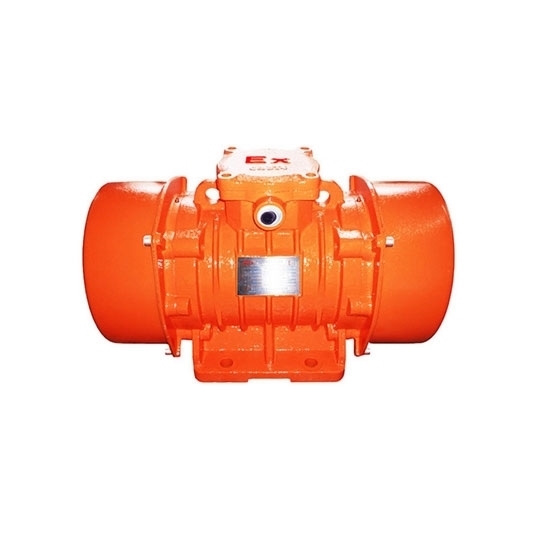
- Stock: In Stock
- Model: RDDLZ-EPNM-VBB-102
- Weight: 1.00
- SKU: RDDLZ-EPNM-VBB-102
Available Options
Electric vibration motor for sale, 750W, three phase, 380 volt, vibration force can be adjusted steplessly, easy to use, long lifespan improves the stability of the vibration motor.
Specification
| Model | RDDLZ-EPNM-VBB-102 |
| Power | 750W |
| Rated Current | 1.68A |
| Voltage | 380V |
| Phase | 3 Phase |
| Pole | 2 Pole |
| Speed | 2875 rpm |
| Frequency | 50/60 Hz |
| Force | 10 kN |
| Insulation Class | F |
| Protection Level | IP55 |
| Weight | 68kg |
| Certificate | CE |
2 Pole Explosion Proof Vibration Motor Dimension (unit: mm)
| A | B | AB | BB | D | L | J | G | H | HD | d | Bolt |
| 200 | 110 | 250 | 220 | 213 | 425 | 60 | 16 | 123 | 284 | 22 | M20 |
750W Explosion Proof Vibration Motor Applications
Details
Tips: The difference in insulation class of vibration motors
The insulation levels of the motor are: O, A, E, B, F, H, C.
The maximum allowable temperature of Class O insulation is 90°. Class O insulation is fiber materials and their products that have not been treated with oil or paint, such as cotton yarn, cotton cloth, natural silk, paper and other similar materials. Compared with the low insulation heat resistance, it is no longer used in vibration motors.
The allowable temperature of Class A insulation is 105°, and Class A insulation is cotton yarn, cotton cloth, natural silk, paper and other similar organic substances that have been treated with oil or oleoresin. The entire winding is impregnated with oil or oleoresin first, and then dried in an electric oven. This procedure is called impregnation. The bubbles or moisture contained in the fibers escape after being heated, and the oil or oleoresin fills the original voids. Because the dielectric constant of oily substances is relatively large, the insulation ability of Class A insulation is strong enough to teach Class O insulation. The paint film of ordinary enameled wire also belongs to Class A absolute complaint. Among the early small and medium-sized vibration motors, Class A insulation is the most widely used. After the 1960s, due to the development of the insulation material industry, small and medium-sized vibration motors have now adopted Class F insulation.
The maximum allowable temperature of Class E insulation is 120°. Class E insulation includes insulating films made of various organic synthetic resins, such as phenolic resin, epoxy resin, and polyester film.
The maximum allowable temperature of Class B insulation is 130°C. Class B insulation includes the use of inorganic substances, such as mica, asbestos, glass wool and organic binders, as well as mica paper, asbestos board, glass varnished cloth, etc. with Class A insulation as the substrate. Class B insulation is widely used in large and medium-sized vibration motors.
The maximum allowable temperature of Class F insulation is 155°C. Class F insulation is an inorganic substance bonded with heat-resistant organic paint (such as polyester paint), such as mica, asbestos, glass wool, etc.
The H-class insulation limit allowable temperature is 180°C. The H-class insulation includes heat-resistant silicone organic resin, silicone organic paint, and inorganic insulating materials that use them as adhesives, such as silicone organic mica tape. Class H insulation is expensive, so it is only used for vibration motors with very strict restrictions on size and quality.
The allowable limit temperature of Class C insulation is 180C ℃. Class C insulation includes various inorganic substances, such as mica, porcelain, glass, quartz, etc., but does not use any organic binder. This type of insulating material has extremely high heat resistance. Their physical properties make them unsuitable for the winding insulation of vibrating motors. Class C insulation is widely used in transmission lines. In the vibration motor industry, ceramics are used to make transformers for insulation and heat dissipation.
